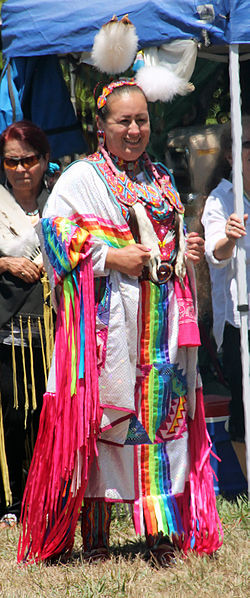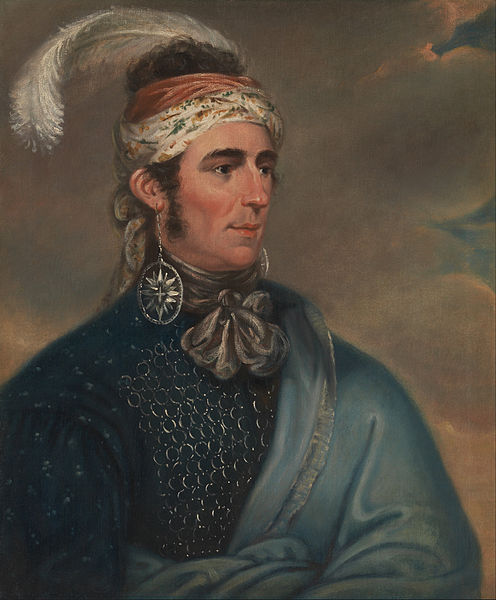Kateri Tekakwitha, given the name Tekakwitha, baptized as Catherine, and informally known as Lily of the Mohawks, is a Catholic saint and virgin who was a Mohawk. Born in the Mohawk village of Ossernenon, in present-day New York State, she contracted smallpox in an epidemic; her family died and her face was scarred. She converted to Catholicism at age nineteen. She took a vow of perpetual virginity, left her village, and moved for the remaining five years of her life to the Jesuit mission village of Kahnawake, just south of Montreal. She was beatified in 1980 by Pope John Paul II and canonized by Pope Benedict XVI at Saint Peter's Basilica on 21 October 2012.
Portrait of Catherine Tekawitha, c. 1690, by Father Chauchetière
Sculpture of Saint Kateri Tekakwitha
Statue of Saint Kateri Tekakwitha by Joseph-Émile Brunet at the Basilica of Sainte-Anne-de-Beaupré, near Quebec City
Statue of Saint Kateri Tekakwitha by Cynthia Hitschler at the Shrine of Our Lady of Guadalupe, in La Crosse, Wisconsin
The Kanien'kehá:ka are in the easternmost section of the Haudenosaunee, or Iroquois Confederacy. They are an Iroquoian-speaking Indigenous people of North America, with communities in southeastern Canada and northern New York State, primarily around Lake Ontario and the St. Lawrence River. As one of the five original members of the Iroquois League, the Mohawk are known as the Keepers of the Eastern Door – the traditional guardians of the Iroquois Confederation against invasions from the east.
Thayendanegea or Joseph Brant, by Gilbert Stuart (1786)
Kanienʼkehá:ka dancer at a pow wow in 2015
Contemporary Quebec Kanienʼkehá꞉ka dance performance at Wikimania 2017
Teyoninhokovrawen (John Norton) played a prominent role in the War of 1812, leading Iroquois warriors from Grand River into battle against Americans. Norton was part Cherokee and part Scottish.








